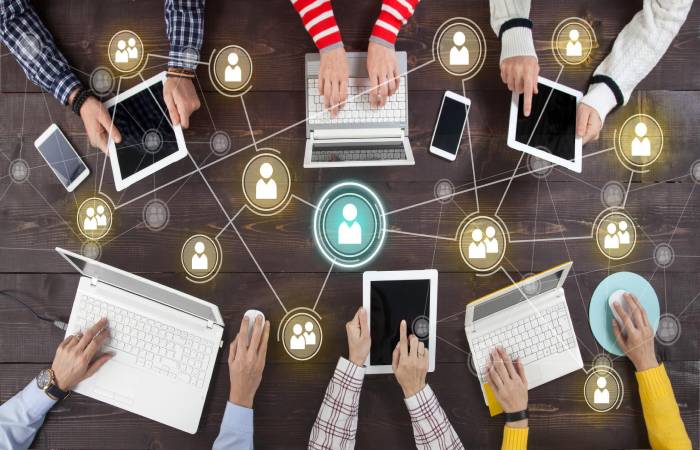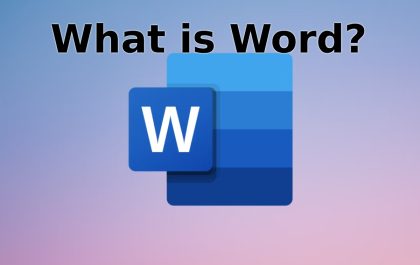Table of Contents
What are Social Networks?
Social networks are digital platforms formed by groups of individuals with common interests, activities, or relations (such as friendship, kinship, & work). Social networks permit contact between people and purpose to communicate and chat information.
Individuals do not necessarily have to know each other before coming into contact through a social network. Still, they can do so through it, which is one of the virtual communities’ most significant benefits.
Types of the Social Networks

Social networks or social media can be classified into two types:
Horizontal
Horizontal refers to social networks that do not have an exact theme but target all users. These networks function as means of information, communication, or entertainment. They are very numerous and widespread, such as Facebook and Twitter.
Vertical
Vertical are those social networks that relate people with specific shared interests, such as music, hobbies, and sports. For example, there is Flickr, a social network whose theme is photography. Within these networks are expert vertical networks, such as LinkedIn, which include individuals who share the work environment or seek to expand their work limits.
Overall, entering a social network is very simple since it includes filling out a questionnaire with primary personal data and thus obtaining a username & password that the user will use to enter the network confidentially. As long as the user encounters the requirements for registration on said network (for example, age of majority), they can do so quickly.
The History Behind Facebook and Twitter
Some of the most popular social networks or social media are Facebook and Twitter.
About Facebook:
It was created in 2004 by a set of students led by Mark Zuckerberg to keep Harvard University (USA) students in touch. Facebook began to gain fame in the student environment and then expanded its target. Quickly, anyone with an e-mail account could join. The network could be adapted to several languages , allowing it to expand globally. Today, this social network has more than 2000 million users.
About Twitter.:
It was created in 2006 and is a social media network that allows you to publish small texts, generally known as “tweets,” that appear on the home page of the user who issues them. Each individual subscribed to the network can “follow” additional users and see the content of their publications.
Why are Social Networks Good for?
Communicate and Share:
Social media functions as a platform for the exchange of information or opinions. Depending on the type of network, the functionalities and kind of communication established between users vary. Users can share documents, images, videos, opinions, and information in many of them.
Maintain or Create Contact:
Social networks allow everyone with access to the Net to create a user and connect with others who are also attached to that social network. They permit you to communicate with friends & family, make new friends, find a partner, and establish work or professional relationships.
Inform:
The great flow of information on social networks lets users stay informed about important events or topics of interest. Most networks will enable you to make a user and customize the type of information displayed on the network.
Entertain Yourself
Social media networks create communities of users with similar interests on specific topics. These networks function as a great source of entertainment and relaxation.
Sell Buy
Many social media networks have emerged as channels for purchasing and selling goods or services. On social media such as “Instagram or Facebook,” users can follow businesses, shops, or independent workers they like and establish business relationships with them.
Features of Social Networks
- They are made up of a virtual community: massive communities extending throughout the planet.
- They can be used on Laptops, computers, tablets, or smartphones.
- They are free, although many offer better functionality in exchange for a monthly/annual payment.
- They deliver information in real-time.
- They allow users to create a profile within the network.
Advantages of the Social Networks
Social networks have advantages or benefits, allowing them to establish themselves as the undisputed protagonists on the web.
They are Immediate.
Social networks work in real-time. The information, videos, images, and opinions shared on networks usually become public and can be known by any network user almost anywhere in the world immediately. Some platforms, such as social, cultural, political, or economic events, regional or global, are instantly known to all their users.
Massive
Social networks have broken cultural and age barriers since they reach many people.
Shorten Distances.
Social networks allow you to communicate with friends, family, and any network user regardless of geographical distance.
Increase the visibility of Brands.
In recent years, advertising and creating corporate and brand profiles have made social media a new market. They permit buyers and sellers from all over the world to link. They facilitate customer service.
Function as a Channel for Entertainment, Learning, and Information.
Social networks function as a means to virtualize certain information. Depending on the context in which the user is concerned, they can learn, be entertained, or be informed.
Allow Information to be Shared.
Networks allow you to share files instantly and easily: documents, music, photographs, and videos.
Provide Job Opportunities.
Some networks make it possible to publicize users’ work profiles. Some, like LinkedIn, were created with the exact goal of forming communities of professionals. There, companies create profiles from which job openings are offered to which interested employers can apply.
Negative Characteristics of Social Networks
Social media have some negative aspects that every user must contest against it:
Cyberbullying.
It is one of the main hazards of social media, and it occurs when an individual or group of individuals harasses or stalks another through social media. This can happen through insults and viralization of private information, among other ways. Boys and girls must be educated to know this type of practice’s physical and psychological consequences.
The Grooming.
It is one of the biggest dangers of cyberbullying. Also called “pedophile deception,” it consists of the harassment of adults towards youths through social networks. Grooming is a criminal fault and must be reported.
Fake News.
The false or unchecked information circulates thanks to the excess of information on the Internet. This can generate confusion for users and difficulty understanding the events.
Indiscriminate Access to Delicate Content.
There is sensual or violent content on social networks, which is often unsuitable, especially for vulnerable social groups such as children.
Misuse in the Use of Social Networks.
Extreme use of social media can lead to loss of contact with the physical world and cause addiction.
The Virtualization of Information.
It is the massive reproduction of data. It can be a positive aspect when the data that goes viral is pleasing to the individual. Still, it can be harmful when confidential information goes viral or harms an individual by losing their privacy.
Conclusion
In conclusion, we explain social networks and how they are classified, as well as their history, advantages, criticisms, and negative aspects.
Related Pages:
Technology – Definition
Operating System – Definition
Electronics – Definition
Windows – Definition
Related posts
Featured Posts
Top Cricket Coaching Classes in Lucknow – Cricket Academies
About Cricket Coaching Classes Cricket Coaching Classes discuss the importance of physical training and balancing it with mental preparation. Everyone…
What is Word (Que es Word) – Brief Explanation
Introduction MS Word is used to prepare a digital document on the computer, which is one of the world’s most…



